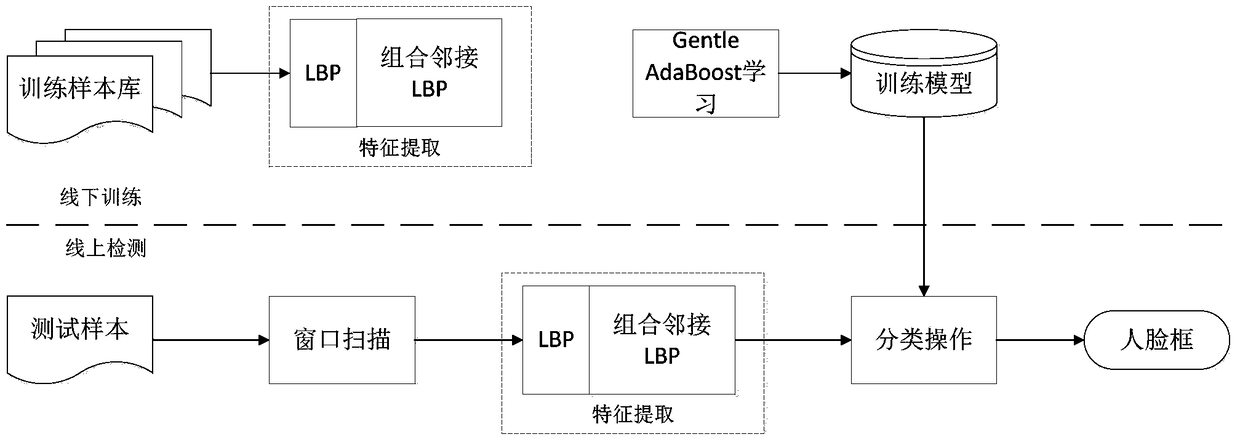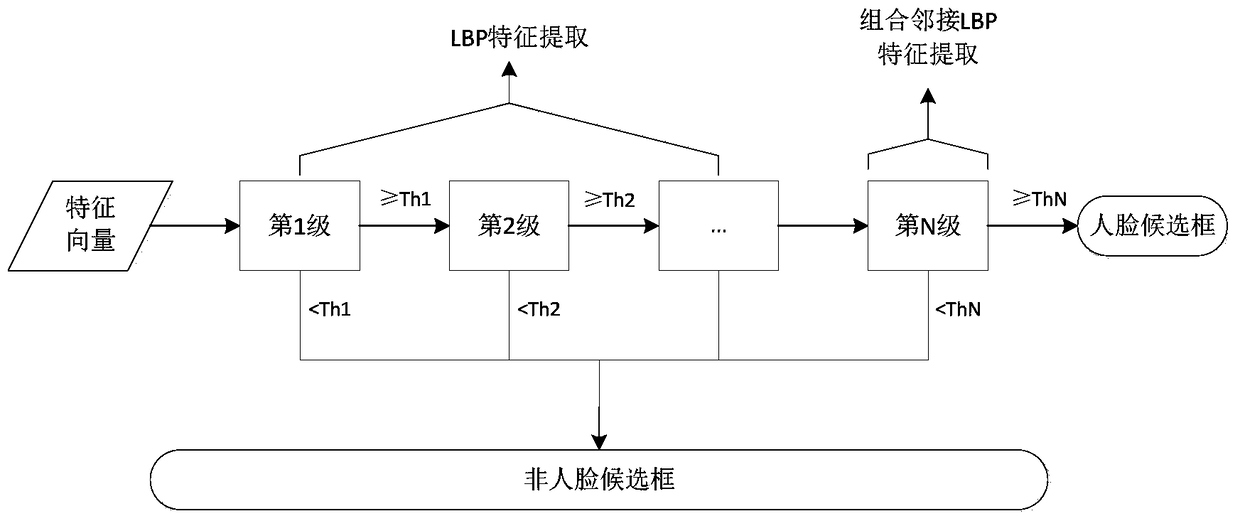Face Recognition Method for Handheld Devices
A face recognition and hand-held device technology, applied in the field of face detection technology, can solve the problems of low accuracy rate, weak classifier performance distribution, inconvenient classifier selection and parameter adjustment, unsatisfactory operation speed, etc., to achieve guaranteed Fast completion, simplified allocation and weak classifier selection process, and the effect of meeting real-time requirements
- Summary
- Abstract
- Description
- Claims
- Application Information
AI Technical Summary
Problems solved by technology
Method used
Image
Examples
Embodiment
[0042] Select training samples: Select face images with rich diversity, including clothing, facial expressions, poses, and lighting conditions. In this embodiment, 9,916 face images are selected as positive samples, and 100,000 images without faces are selected as negative samples. Randomly select 7916 positive samples and 10000 negative samples for the training of the classifier, and use the remaining 2000 positive samples and 10000 randomly selected negative samples for the verification of the classifier.
[0043] The N-level cascade classifier used in this embodiment is 7-level. When training the first 6-level classifiers based on LBP features, the size of the sample is first adjusted to 24×24 pixels; the 7th level is trained based on combined adjacent LBP features. When classifying, the sample size is resized to 88×88 pixels. The classifiers corresponding to each level are trained through the Gentle AdaBoost algorithm, and they are connected in series to form a cascade cl...
PUM
 Login to View More
Login to View More Abstract
Description
Claims
Application Information
 Login to View More
Login to View More - R&D
- Intellectual Property
- Life Sciences
- Materials
- Tech Scout
- Unparalleled Data Quality
- Higher Quality Content
- 60% Fewer Hallucinations
Browse by: Latest US Patents, China's latest patents, Technical Efficacy Thesaurus, Application Domain, Technology Topic, Popular Technical Reports.
© 2025 PatSnap. All rights reserved.Legal|Privacy policy|Modern Slavery Act Transparency Statement|Sitemap|About US| Contact US: help@patsnap.com



